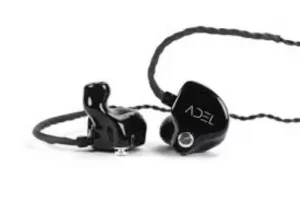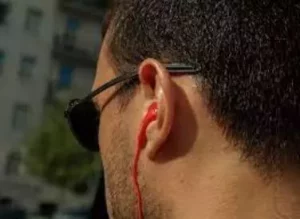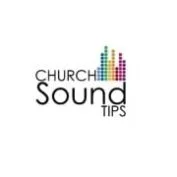A lot of in ear monitors are marketed as being “noise cancelling” but in truth, they are just less noisy. The problem with this is that they still emit sound waves, and these can damage your hearing over time.
So yes, personal monitors can damage your ears and should not be used for an extended period or used carelessly. Some signs of potential harm include constant ringing in the ears (tinnitus) and high irritability.
This blog post will explore the dangers in ear headphones pose to your ears, what you can do to protect yourself from damaging your hearing, and how to find a good monitor for your needs.
Risks of listening to loud music through IEMs
The in ear monitors that are most commonly used in the music industry tend to be much louder than other types of headphone. The reason for this is because both wired and wireless iems need to produce a sound pressure level high enough so they can overcome background noise, which means you will have “to turn up the volume in order to get an accurate frequency response in a noisy environment”.
The in ear monitors produce sound levels in the range of 110dB, which is roughly equivalent to being in front of speakers at an average rock concert or standing in front of a jet plane taking off. The problem with this type of exposure over time is that it can damage your hearing quite badly and even lead to permanent hearing damage in some cases.
Ambient noise can also have a negative impact on in-ear monitors. This is because in order to produce sound levels high enough, you need to turn up the volume in noisy environments as well and this can damage your ears if done for too long!
In ear monitors with a high bass response tend to be the loudest in ear monitors because this frequency is harder for our ears to hear.
High frequencies can also pose a problem with in ear monitors because they can damage your ears more quickly than the lower frequencies. This is also due to the fact that this type of sound is harder for our ears to detect and we will turn up the volume in order to hear it properly, which increases hearing risks.
In addition to high frequency sounds being dangerous when using in ear monitors, they can also cause ear fatigue in which you feel like you need to turn up the volume in order to hear properly.
This is why it’s important for musicians and music professionals, in general, to protect their hearing when using in ear monitors because long term exposure could lead to permanent hearing loss just by prolonged exposure over several hours.
Hearing loss and tinnitus
Tinnitus is a symptom of damage in the ear caused by loud music or loud noise. Tinnitus causes ringing in your inner ear, which can be temporary or long term and in some cases, it may never go away. This type of noise induced hearing loss can have an adverse effect on mental health as well because tinnitus often leads to anxiety, depression and in some cases can make you feel like your in an altered reality.
The problem with in ear monitors is that since they are very close to the ear drum, damage caused by loud noises in this area will be more severe than if it had happened in any other part of the ear.

How can you reduce the risk of hearing loss
Attenuation
The first thing you should do if you are thinking about using in ear monitor headphones in the long term is to make sure they have a good attenuation rating, ideally at least 25dB. This means that loud sounds in the surrounding area are reduced in volume by this amount. The attenuation should also help avoid things like dizziness which can be cause by in ears.
Use filters for sound isolation
A second measure you can take is to look for in ear monitors that have a special built in filter system, these tend to be slightly more expensive but they do make it much easier to protect your ears from loud sounds when using in ear monitor headphones.
Lower volume
You should also try not to turn the iem system up too loud. If you are in a band then it can be easy to get carried away but remember that in ear monitor headphones do not create sound, they only feed what is already there back into your ears so turning them up louder will just damage your hearing further and increase how quickly your ears start ringing after practicing or using in ear monitor headphones.
Monitor Mix
Make sure the audio engineers working your sound console have the right monitor mix for the musicians in the band in your in ear monitor system. If you are playing bass or electric guitar then it is fine to have more of the bass frequencies in your headphones mix while if you are singing lead vocals than it should be mostly mid and high frequencies in your in ear monitor headphones so that you can hear yourself properly over any backing tracks etc..
On stage ambient noise
Make sure to keep ambient noise on stage to a minimum in in ear monitor systems. If there is a lot of noise in the room then it can disrupt your in ear monitor mix which in turn makes you less able to hear yourself properly in in ear monitor headphones and more likely to damage your ears by turning up the volume too loud.
Also, if sound bleed from onstage is an issue then you should look for in ear monitor headphones that have good sound isolation features, this will help to block out the ambient noise of other people on stage.
Another thing you can do is make sure there are no loud amps or instruments nearby so that if anything does bleed in from your in ear monitors it will be softer and less likely to damage hearing. Also, singers with an earpiece need to make sure they aren’t trying to sing louder then necessary if they can’t hear properly because of other noise on the stage.
Proper seal on earbuds
Make sure the earbuds are a good fit in the in ear monitor headphones. You should try to get in touch with your supplier if you are not sure what size tips to go for, they will be able to help out. You might also be interested in my other post about why singers wear earbuds on stage.
Also make sure that any foam or soft rubber tips on in ear monitors have been fitted correctly and do not come loose easily when in use because this can cause in ear monitor headphones to not seal properly in the ears and this, in turn, can damage hearing.
Cleaning
Make sure your musicians clean their in ear monitors regularly because over time dirt and wax from inside the ear canal builds up on the rubber tips of in ear monitors which in turn makes them less effective at blocking sound.
If you are cleaning in ear monitors always make sure that they have been turned off first in in ear monitor systems so they don’t get damaged when using water and never use anything sharp to clean in ear monitors because this will damage the rubber tips.

Conclusion
In ear monitors are great for bands and musicians, but you should always exercise caution to protect your hearing in the long term. Make sure to only turn up your iem as loud as is comfortable, and avoid turning them up too high if you can. If possible take breaks from using in ears occasionally, or use speakers instead for short periods of time.

Leave a Reply